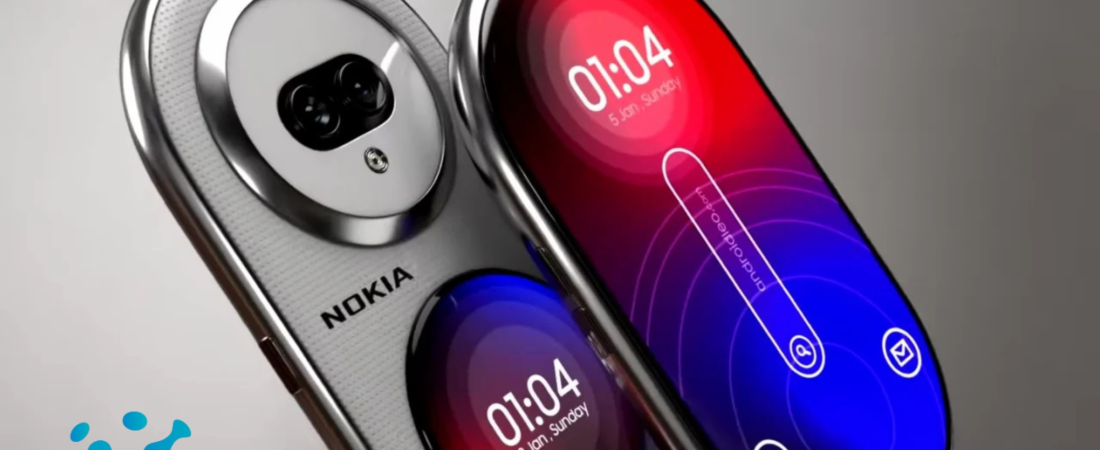Highlights
The smartphone market in 2025 is dominated by big companies like Apple, Samsung, and Google. But what if a legendary underdog makes a surprise comeback?
Nokia,once the king of mobile phones,is rumored to launch the “Infinity Pro,” a flagship that could shake up the industry.
No hype. No blind nostalgia. Just a realistic breakdown of why this phone, if executed right, could be the dark horse of 2025.

We’ll analyze:
- Nokia’s past failures & lessons learned
- Leaked specs vs. current market leaders
- Where the Infinity Pro could win (and where it might fail)
- Past underdog success case studies
Problem:
Why the Smartphone Market Needs a Shake-Up?
Same Old Designs, Incremental Upgrades
- Apple iPhones have had virtually the same designs since 2020.
- Samsung Galaxy S24 brings incremental camera upgrades from the S23.
- Consumers are tired of it. Global smartphone sales fell 3.2% in 2023 (IDC).
Increasing Prices, Less Innovation
lagship phones now retail for $1,000–$1,600 (iPhone 15 Pro Max, Galaxy S24 Ultra).
However, the majority of “innovations” are simply marginally improved chips or cameras.
Reliability Becomes Optional
Today’s phones are breakable. Repair prices are sky-rocketing.
Samsung & Apple charge $300+ for a screen fix.
Case Study-Fairphone’s Surprise Success
Fairphone, a little Dutch company, expanded 40% in 2023 by prioritizing repairability & sustainability. Demonstrating customers demand an alternative to Big Tech dominance.
According to this case study which i studied,this is where Nokia infinity pro can attack.
Nokia’s Rocky Comeback (And Why the Infinity Pro Could Set It Right)
Nokia’s comeback to smartphones (through HMD Global) has been bittersweet:
Successes:
Nokia 3310 (2017) shifted 10 million units based on nothing but nostalgia.
Nokia G22 prioritized repairability (iFixit score: 8/10).
Failures:
Subpar specs in mid-tier phones.
No actual flagship contender.
How the Infinity Pro Might Set Nokia’s Errors Right
Leaked Specs That Actually Compete
| Feature | Nokia Infinity Pro (Rumored) | iPhone 15 Pro | Galaxy S24 Ultra |
|---|---|---|---|
| Processor | Snapdragon 8 Gen 3 | A17 Pro | Snapdragon 8 Gen 3 |
| Display | 6.9″ 144Hz AMOLED | 6.7″ 120Hz | 6.8″ 120Hz |
| Battery | 6,500mAh | 4,422mAh | 5,000mAh |
| Durability | IP69 + Military Grade | IP68 | IP68 |
| Price | $799 (estimated) | $999 | $1,299 |
If true, this would be a flagship killer.
Nokia’s Durability Legacy = A Huge Advantage
Nokia 3310 was unbreakable. The Infinity Pro could restore that.
Rumored IP69 rating (above IP68) translates to improved dust/water resistance.
Military-grade drop protection would attract outdoor users & clumsy shoppers.
Stock Android = Faster, Longer Updates
The majority of Android brands (Samsung, Xiaomi) bloat their OS.
Nokia employs near-stock Android, which means:
Fewer bugs
Quicker upgrades (Nokia vows 3 OS updates for flagships)
Case Study-The Rise of OnePlus as a “Flagship Killer”
according to this case study that i studied,OnePlus shook up the industry in 2014 with premium specs at half the cost of Samsung/Apple. The Nokia Infinity Pro could do that in 2025.
How Nokia Infinity Pro Can Win in 2025
Price It Right ($700–$900 Range)
799 would price below the iPhone 15 Pro ($999) and S24 Ultra ($1,299).
Mid-range customers would step up to flagship specs.
Sell It as the “Unbreakable Phone”
Emphasize IP69, military-grade ruggedness, and simple repairability.
Target construction workers, travelers, and klutz users.
Get Carriers to Invest in Aggressive Offers
Samsung & Apple own carrier stores.
If Nokia(infinity pro) can secure T-Mobile/Verizon exclusives, it might pick up speed.
Don’t Use Nostalgia Too Heavily
A revamped version of the original Nokia ringtone? Yes.
A brick-sized phone? No.
Emphasize Battery Life (A True Pain Point)
6,500mAh battery would run for 2+ days—something no flagship device provides.
Market it as “The Phone That Won’t Die.”
Will It Actually Work? Potential Roadblocks
imited Brand Power in 2025
Nokia’s not the brand name it was.
Heavy marketing (similar to OnePlus’s initial viral marketing).
Weak Camera Performance?
Nokia’s newest phones like infinity pro had unremarkable cameras.
Collaborate with Zeiss (once more) for high-quality optics.
Carrier & Retailer Resistance
Stores peddle iPhones & Galaxies because they move them.
Provide improved profit margins to retailers.
A Long Shot, But Possible
If Nokia gets it right:
Pricing ($799 or less)
Durability (IP69 + military-grade)
Marketing (“The Unbreakable Flagship”)
then the Infinity Pro might swipe 5–10% of the premium market from Samsung & Apple.
If it’s another overpriced mid-ranger, it’ll fail.
The Bottom Line:
The smartphone market needs shaking up. If the Infinity Pro meets leaks, it might be 2024’s biggest surprise hit.
How have previous Nokia phones done against the competition?
Nokia’s recent performance in infinity pro in the smartphone sector has been one of highs and lows, particularly when pitted against its rivals. Here’s an overview of how Nokia has done year by year:
Dominance in the Early Mobile Era:
In the late 1990s and early 2000s, Nokia was the global leader in mobile phones, known for its durable and user-friendly devices. Models like the Nokia 3310 became iconic, cementing the brand’s reputation for reliability. However, the rise of smartphones and Nokia’s slow adoption of newer technologies, such as touchscreens and app ecosystems, led to a decline in market share.
Competition with Apple and Samsung:
Nokia had fallen behind by the time Apple introduced the iPhone in 2007 and Samsung started ruling the Android world. Its failure to adopt Android, instead of continuing with the Symbian operating system, was a turning point failure. Rivals such as Samsung and Huawei took advantage of increasing Android popularity, and Nokia lagged behind.
Microsoft Partnership and Lumia Series:
In 2011, Nokia entered into an alliance with Microsoft to manufacture Windows Phone devices under the brand Lumia. Although the Lumia series was appreciated for design and camera capabilities, it could not make meaningful market inroads because of the limited app ecosystem of Windows Phone. It was during this time that Nokia lost more ground to Apple, Samsung, and new Chinese brands.
Re-entry with Android:
Having sold its phone business to Microsoft back in 2014, Nokia returned to the smartphone space in 2017 under HMD Global. This time around, it adopted Android, with an emphasis on mid-range and budget offerings. Although these phones have been praised for their build and uncluttered software experience, Nokia has not been able to match the aggressive pricing and specifications of the likes of Xiaomi, Oppo, and Realme.
Current Position:
Nokia has made a niche in countries such as India and Africa, where cost and ruggedness are the main considerations. Its global market share is still low, though, when compared to the likes of Samsung, Apple, and Huawei. Nokia’s emphasis on sustainability and long-term software support has been a distinguishing factor, but it is intensely competitive in the mid-range space.
What are Nokia’s strengths and weaknesses compared to Samsung?
Nokia and Samsung are two of the leading players in the mobile phone market, both with their own strengths and weaknesses. Here’s a comparison:
Strengths of Nokia Compared to Samsung
Durability and Build Quality:
Nokia has long been known for making durable phones. Its phones are usually lauded for their sturdy build, which makes them perfect for those who want reliability.
Software Simplicity:
Nokia smartphones use a clean, unadulterated version of Android under the Android One program. This guarantees frequent updates and a seamless user experience, in contrast to Samsung’s One UI, which proves to be bloated to some users.
Affordability:
Nokia is concerned with offering value-for-money handsets, especially for the mid-range and budget segments. This allows Nokia phones to reach more users, particularly in emerging markets.
Sustainability:
Nokia focuses on environmentally friendly practices, including recyclable materials and repair-friendly designs. This aligns with increasing consumer demand for sustainable products.
Weaknesses of Nokia vs Samsung
Market Presence:
Samsung enjoys a much larger market share and global presence than Nokia. Samsung’s large product portfolio, including budget to flagship devices, appeals to a wider audience.
Innovation and Features:
Samsung is famous for its innovative technology, including foldable phones and high-definition displays. Nokia has not yet caught up with Samsung’s innovation speed in flagship models.
Brand Perception:
While Samsung is viewed as a market leader in smartphones, Nokia is generally linked to its historical success and fails to rebrand itself as a competitive brand.
Samsung’s phones have sophisticated camera systems with multi-lens configurations and cutting-edge features such as variable aperture. Nokia’s camera technology, although better, remains behind Samsung’s.
This contrast shows how Nokia’s advantages are in durability, simplicity, and affordability, whereas Samsung’s are in innovation, market presence, and high-end features.
What Do You Think?
Can you imagine getting a Nokia(infinity pro) flagship in 2025? Or is the iPhone/Samsung stronghold too tight?
Feel free to tell in comments!
if you want to need more tech insights? Follow Technologia.site for analysis coverage!

